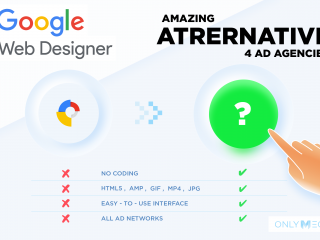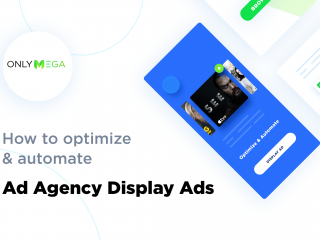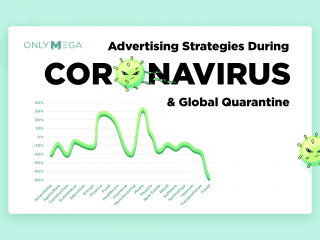From this past July 9th moving forward, Google has extended its adblocker across the world in the means to promote the Coalition for Better Ads. This measure may begin to get implemented by Chrome from this date forth. But, it was already in the works, dating back to 2017.
On February 2018, Google started to implement ad filtering for disruptive, annoying or intrusive ads on Chrome throughout North America and Europe. But this was no surprise, as it had been pre-announced in 2017, their intention? Have advertisers compel to adapt their ad publishing behavior by the Coalition for Better Ads.
Now Google’s really going all the way, as all these measures previously announced and discussed by the company will now come true. We think the date may not be tied to the specific Chrome version, however, Chrome 77 will make its launch on July 25th, which means that Google will be expanding its ad blocker to the world server-side.
Why is Google doing this to its beloved publishers? Easy. The industry group was founded in response to the rise of consumer ad-blocking. Which makes us think about the quality of ads being delivered to our consumers.
What Conforms the Coalition for Better Ads?
And more importantly, should publishers begin to worry about their ads being blocked? Well…That’s up for debate, which we will discuss in the next section of this article.
For now, let’s learn about The Coalition for Better Ads, which is a leading international trade, made up of associations and companies involved in online media. Their mission? Improve consumers’ experience with online advertising. They’re involved in leveraging consumer insights and be able to implement the right global standards so that online advertising addresses the correct consumer expectations.
Why? Well, because advertising, at the end of the day, helps support valuable content, journalism and social connections across the world wide web. And it’s no news that consumers are oftentimes disrupted and frustrated with ads that get in the way of a smooth browsing experience, especially when it comes to content.
This is all true, and as publishers, advertisers and brand owners, we should own up to the truth that good advertising, should be consumer-friendly and not “in-your-face”. Sure, competition in any industry is rough, but delivering quality, consumer-friendly ads is worth millions for your ROI & CTR, trust us, quality is everything, and this is what the Coalition is looking to promote.
The Better Ads Standards
Now, the Better Ads Standards, consists of 12 ad experiences, based on their research, which were found to be particularly disruptive and annoying to users. Here are examples:
What you need to know About the Better Ads Standards
The Coalition for Better Ads developed the Better Ads Standards for all desktop web and mobile web users. This was based on in-depth research which involved about more than 66,000 consumers. The first standards to be published were for North America and Europe in March 2017, these have been applied by many industry participants within their business practices.
The Better Ads Standards’ Ad-Blocking Process
This is pretty simple when a Chrome user browses a page, Chrome’s ad filter checks if that page/site belongs to one that fails the Better Ads Standards. In that case, the network requests on that page, are checked against a list of ad-related URL patterns, any matches will be blocked, and this will prevent all ads from displaying on the page the user is on. This brings us to January 2019, when this broad research now supports the adoption of the same standards worldwide for all desktop and mobile web pages.
This research helped to identify the ad experiences that rank the lowers over a range of user experience factors that correlate directly with the user’s propensity to use ad blockers. This is what helped shape the Better Ads Standards that will identify any ad experiences that “fall beneath a threshold of consumer acceptability.”
There are twelve tested total ad experiences that fall beneath the guidelines.
- 4 sorts of desktop web ads
- 8 sorts of mobile web ads
Here are the examples:
As you can see, the annoying, most disruptive formats include:
- Pop-ups
- Auto-play video ads with sound
- Flashing animated ads
- Large sticky ads
- Prestitial ads
- Full-screen scrollover ads
- Plus others
So now that you know what type of ads are not supported by the Better Ads Standards this brings us to our next point:
Should Publishers Worry About Chrome’s New Measure to Block Ads?
Publishers, advertisers nor small brands should worry about this new measure if you’re planning on delivering quality ads to your consumers because let’s be honest: Nobody likes annoying ads. But if you plan on delivering quality… Quality clicks you will receive.
Looking into some statistics, Chrome has 64% of the global browser market, that’s a big portion of consumers using the browser to create leads.
So, should you worry? Let’s take a look at how Google evaluates if your site adheres to the Better Ads Standards. Remember, the BAS will identify any ads that fall beneath the allowed threshold of consumer acceptability:
- Google evaluates a few samples of pages from your site as a publisher.
- After that, it gives your site a Passing, Warning or Failing grade based on the percentage of page views within that sample.
- Samples which contain poor user experiences, that don’t meet the Better Ads standards will get a Failing grade.
Is there a way publishers can find out whether they’ve received any warning or failing assessments? Sure. You can go to Google’s Ad Experience Report, which launched last fall within the Google Search Console.
Also, if you’re a site owner, you can use the Google Search Console’s Abusive Experiences Report to check if your site contains annoying experiences which need to be fixed or removed.
Take note: Your site will have 30 days after being notified of violations to fix your ads. If you fail to do so, Chrome will block ads.
Ads won’t render on sites that have failing grades. Makes sense right? Users that land on a site that failed the BAS, Chrome’s filter will automatically prevent ads from displaying on that page. Users will then come across a message which specifies that ads were blocked, but they still have the ability to allow ads on the site.
How does Chrome’s Selective Ad Blocking Work
Google has expressed that they would prefer if Chrome didn’t have to start blocking ads. Their goal is not censoring, but to improve the overall user experience on the web. The company is using Chrome’s ad blocker to tackle “abusive behaviors and experiences” — not just ads.
Plus, Google had noted that in the past, Ad Blockers really hurt publishers that create free content and use good advertising to sustain their business.
Google Chrome’s built-in blocker looks to reduce the usage of third-party blockers that block all ads rendered on any site, no matter their score.
Need another reason not to worry? The majority of European and North American publisher sites actually pass the BAS test. This means that there was no great impact on revenues, it has been minimal. In Asia, on the other hand, it has taken its toll, here ad blocking is highest the world, leading up to a 50% blockage rate according to this survey.
NEWS: FireFox is now Blocking Ads by Default.
Well, well, well… As opposed to Google’s more “discrete” measures to start regulating annoying ad behavior, FireFox has gone all the way and is now blocking ads left and right. Mozilla has taken the boldest stance in the game against disruptive advertising practices, through an announcement they made back in 2018. Now, if you’re an avid Chrome or Safari user, you may have not known this measure had been taken, however, as a publisher, advertiser or brand owner, you should definitely take note of this.
It’s one of Mozilla’s most proactive approaches on the search to protect consumer privacy.
They will also block trackers that slow down page load times and strip cookies from web content. They’ve also made known that all web trackers will be disabled by default in the future. They’re looking to improve the overall performance with this measure.
Final Thoughts
Improvement of user experience. This is basically what Google’s looking for, as well as to strip the web from ads that may reproduce abusive behavior online. Chrome’s ad blocker was not designed to block all ads online, but instead to improve their quality. It’s all for the best really, as Google wants advertising to stay tolerable and for creative ads to remain a part of the world wide web for years to come.
On the other hand, let’s not forget that Chrome is the browser with most users in the world (plus all android and desktop devices) and Google owns it. So, who knows? Maybe this is could easily be pre-planning stage previous to Google disabling all ad block extens











